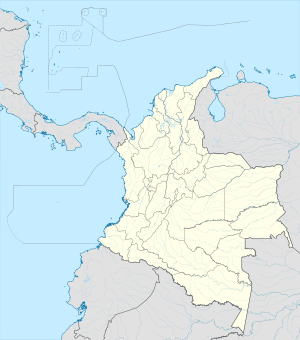López Adentro
This article has multiple issues. Please help improve it or discuss these issues on the talk page. (Learn how and when to remove these messages)
|
Lopez Adentro | |
|---|---|
 Location of the town of Lopez Adentro, Cauca Department of Colombia | |
| Coordinates: 3°07′0.8″N 76°20′28″W / 3.116889°N 76.34111°W | |
| Country | |
| Department | Cauca Department |
| Population (2018) | |
• Total | 2,000 |
| Time zone | UTC-5 (Colombia Standard Time) |
López Adentro is an indigenous reservation of Colombia, belonging to the Nasa culture that is located to the north of the department of Cauca,[1] between the municipalities of Caloto[2] and Corinto.[3]
The reservation has heights ranging from 1,050 and 4,100m, corresponding to mountainous landscapes 5 and alluvial piedmont plain. The indigenous community is distributed in several thermal floors ranging from temperate to low paramuno. The temperature oscillates between 12 and 23 degrees Celsius, with an average annual rainfall of 1,673mm.
Geographical aspects
[edit]It has a population of more than 2,000 inhabitants. The human settlements are presented in the form of hamlets inside the villages of San Rafael, Chicharronal, El Jagual, El Crucero, La Secreta, Los Alpes, El Danubio, Las Violetas, La Cristalina and El Boquerón.
Environmental conflict
[edit]The Nasa indigenous community has been seriously affected by the monoculture of sugar cane, which has generated a considerable number of environmental liabilities and an ecological-distributive conflict, which have modified ancestral agro-ecological customs.[4] Many indigenous people in this region ceased to be farmers in order to lease their lands to the different sugar mills in the region.[citation needed]
References
[edit]- ^ "Official Web Site of Cauca".
- ^ "Official Web Site of Caloto".
- ^ "Official Web Site of Corinto".
- ^ Correa-García, Esteban (Summer 2018). "Territorial transformations produced by the sugarcane agroindustry in the ethnic communities of López Adentro and El Tiple, Colombia". Land Use Policy. 76: 847–860. doi:10.1016/j.landusepol.2018.03.026. S2CID 51932235 – via SCOPUS.

